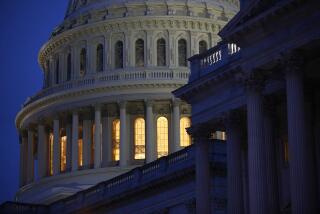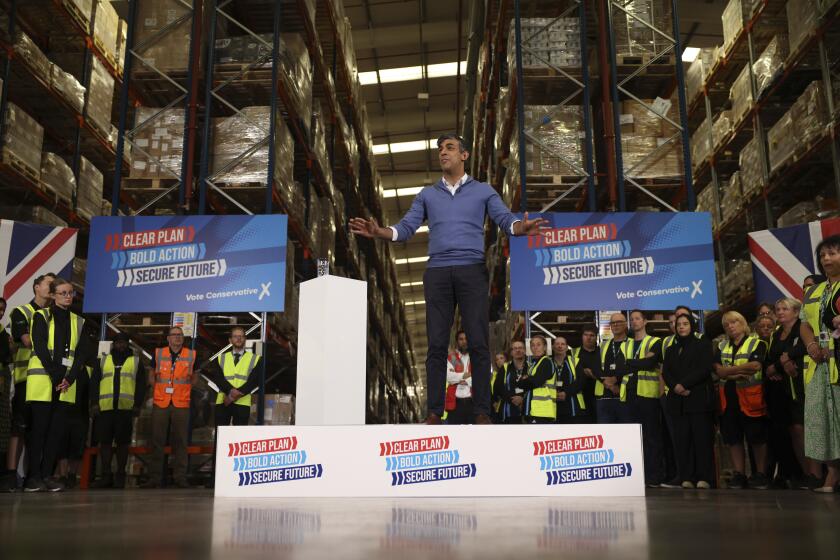Op-Ed: Oh dear, California will decide who controls the House of Representatives
On Election Day next November, the nation will be watching California to see whether the Democrats can retake the House of Representatives. Nearly one-third of the congressional districts represented by Republicans that Hillary Clinton carried in 2016 are in the Golden State, and if the Democrats are to regain the gavel in the House, they’ll need to win most of those districts. A passel of Democratic challengers have already announced they’re running against the Republican incumbents, and thousands of activists from such groups as Indivisible have begun mobilizing voters.
The outcome of these elections, however, will be determined not only by the appeal and resources of the candidates, the mobilizations on their behalf, and President Trump’s unpopularity. A host of other factors — California’s top-two primary system, the likelihood of viable Latino candidates for governor and U.S. senator, the probability of a gas-tax repeal initiative, and the efforts of Democratic candidates for statewide office to win Republican voters — will likely play a crucial role in deciding the congressional contests the Democrats need to win.
Midterm elections are invariably about turnout: The party that does the better job of getting its voters to the polls is usually the winner. That will present a massive obstacle to California Republicans next November, inasmuch as their membership has so shriveled in recent years that they can no longer field competitive candidates in statewide races. What compounds their challenge is the state’s bizarre jungle primary, in which the top two finishers, regardless of party, advance to the November runoff.
That means that potential Republican voters a year hence (if recent polls are even marginally accurate) will likely be confronted with two Democratic candidates for governor, Lt. Gov. Gavin Newsom and former Los Angeles Mayor Antonio Villaraigosa, and two Democratic candidates for U.S. Senate, incumbent Dianne Feinstein and State Senate President Kevin de León. These are not choices that will spur many Republicans to bother going to the polls, which could have a significant effect on the GOP’s efforts to hold its embattled congressional and state legislative seats.
Nearly one-third of the congressional districts represented by Republicans that Hillary Clinton carried in 2016 are in the Golden State.
Compounding the Republicans’ challenge will be the probability of heightened Latino turnout. Trump’s broadsides against fictitious “Mexican rapists” and his heightened efforts to deport people in the country illegally have understandably bestirred California Latinos. Should these factors not suffice, however, the 2018 gubernatorial and senatorial contests will also see the first serious bids by Latino candidates — Villaraigosa and De León — in modern California history. (Congresswoman Loretta Sanchez’s campaign for the Senate in 2016 was perfunctory and underfunded.)
Their campaigns will be anything but identical: Villaraigosa is already campaigning for Republican votes against the more liberal Newsom, while De León is clearly running to Feinstein’s left . But the likelihood that both will appear on November’s ballot is almost certain to boost Latino turnout to record levels for a midterm election. That doesn’t augur well for Republican members of Congress in districts with growing Latino populations (and virtually every one of California’s 53 congressional districts has a growing Latino population).
In the face of all these impediments, what can the Republicans do to get their voters to the polls in the districts they’re trying to hold? The answer they’ve come up with is a statewide initiative to repeal the increase in the gas tax meant to repair the state’s bedraggled streets and highways. For all the ideological pliability that the Republicans have demonstrated since Trump was elected, the north star of Republicanism remains their opposition to taxes. Whether the gas tax hike is actually repealed, I suspect, isn’t of primary importance to GOP strategists. What matters is that the measure could bring out Republicans in sufficient numbers to keep at least some congressional seats red.
Possibly aiding GOP efforts, Feinstein and Villaraigosa will campaign not just for Democratic and independent votes, but also for the votes of however many center-right Republicans still exist in California. To Democrats hoping their party can regain the House, a Republican who splits her ticket between, say, Feinstein (lest De León, author of the new “sanctuary state” legislation, prevail) and GOP U.S. Rep. Darrell Issa (R-Vista) is still a vote for continued Republican control of the House
All of which is why the Democrats’ chances of retaking the House remain cloaked in mystery, wrapped in multiple California enigmas.
Harold Meyerson is executive editor of the American Prospect. He is a contributing writer to Opinion.
Follow the Opinion section on Twitter @latimesopinion or Facebook
More to Read
A cure for the common opinion
Get thought-provoking perspectives with our weekly newsletter.
You may occasionally receive promotional content from the Los Angeles Times.






